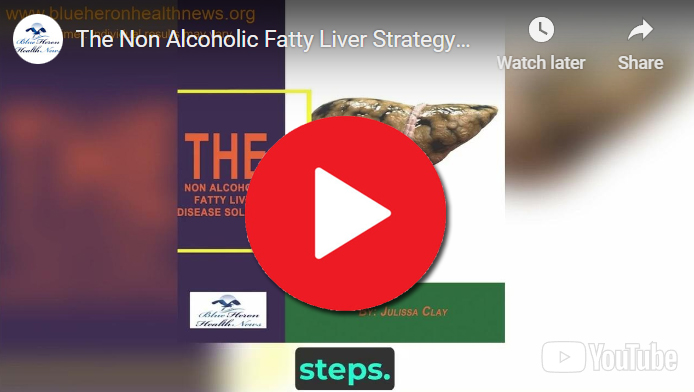
The Non Alcoholic Fatty Liver Strategy™ By Julissa Clay the program discussed in the eBook, Non Alcoholic Fatty Liver Strategy, has been designed to improve the health of your liver just by eliminating the factors and reversing the effects caused by your fatty liver. It has been made an easy-to-follow program by breaking it up into lists of recipes and stepwise instructions. Everyone can use this clinically proven program without any risk. You can claim your money back within 60 days if its results are not appealing to you.
What is fatty liver disease?
Fatty liver disease, also known as hepatic steatosis, is a condition characterized by the accumulation of excess fat in the liver cells. It can range from simple fatty liver, which is generally benign, to more severe forms like steatohepatitis, which can lead to liver damage. There are two main types of fatty liver disease:
1. Non-Alcoholic Fatty Liver Disease (NAFLD)
NAFLD is the most common form of fatty liver disease and occurs in people who drink little or no alcohol. It is often associated with metabolic syndrome, which includes conditions like obesity, type 2 diabetes, high blood pressure, and high cholesterol levels. NAFLD can be further categorized into:
- Simple Fatty Liver (Steatosis): This is the early stage of NAFLD, where there is fat buildup in the liver without significant inflammation or liver cell damage.
- Non-Alcoholic Steatohepatitis (NASH): A more severe form of NAFLD, NASH involves not only fat accumulation but also inflammation and damage to liver cells. NASH can progress to fibrosis (scarring), cirrhosis, or liver cancer.
2. Alcoholic Fatty Liver Disease (AFLD)
AFLD is caused by excessive alcohol consumption. Alcohol metabolism in the liver leads to the production of toxic by-products that can cause fat buildup, inflammation, and damage to liver cells. AFLD can progress through stages similar to NAFLD:
- Alcoholic Steatosis: Fat accumulation in the liver due to alcohol consumption.
- Alcoholic Hepatitis: Inflammation and liver cell damage, often accompanied by symptoms like jaundice and liver pain.
- Alcoholic Cirrhosis: Severe scarring of the liver tissue, leading to impaired liver function.
Symptoms
Fatty liver disease often has no noticeable symptoms, especially in its early stages. When symptoms do occur, they may include:
- Fatigue
- Weakness
- Mild upper right abdominal pain or discomfort
- Unexplained weight loss
In more severe cases, particularly with NASH or alcoholic hepatitis, symptoms can include:
- Yellowing of the skin and eyes (jaundice)
- Swelling in the abdomen and legs
- Itching
- Confusion or difficulty thinking clearly
Diagnosis
Fatty liver disease is often discovered during routine blood tests or imaging studies conducted for other reasons. Diagnostic methods include:
- Blood Tests: Elevated liver enzymes may indicate liver inflammation.
- Imaging Tests: Ultrasound, CT scan, or MRI can detect fat accumulation in the liver.
- Liver Biopsy: Involves taking a small sample of liver tissue to assess the extent of liver damage and inflammation.
Risk Factors
The risk factors for fatty liver disease include:
- Obesity
- Type 2 diabetes
- Metabolic syndrome
- High cholesterol or triglycerides
- Hypertension
- Rapid weight loss
- Certain medications
- Genetic factors
Treatment and Management
The primary treatment for fatty liver disease focuses on lifestyle changes, including:
- Weight Loss: Even a modest reduction in weight can help reduce liver fat.
- Diet: A balanced diet rich in fruits, vegetables, whole grains, and lean proteins, and low in saturated fats, refined sugars, and alcohol is recommended.
- Exercise: Regular physical activity can help reduce liver fat.
- Management of Underlying Conditions: Controlling diabetes, high blood pressure, and cholesterol levels.
In cases of alcoholic fatty liver disease, abstinence from alcohol is crucial. For advanced stages like cirrhosis or liver failure, more intensive treatments such as medications, liver transplantation, or participation in clinical trials may be necessary.
Prognosis
The prognosis for fatty liver disease varies depending on the stage and underlying causes. Simple fatty liver without inflammation generally has a good prognosis, while NASH or AFLD can progress to more serious liver diseases, including cirrhosis and liver cancer, especially if risk factors are not addressed.
Prevention
Prevention strategies include maintaining a healthy weight, eating a balanced diet, engaging in regular physical activity, limiting alcohol intake, and managing associated conditions like diabetes and high cholesterol. Regular medical check-ups can also help in early detection and management.

The Non Alcoholic Fatty Liver Strategy™ By Julissa Clay the program discussed in the eBook, Non Alcoholic Fatty Liver Strategy, has been designed to improve the health of your liver just by eliminating the factors and reversing the effects caused by your fatty liver. It has been made an easy-to-follow program by breaking it up into lists of recipes and stepwise instructions. Everyone can use this clinically proven program without any risk. You can claim your money back within 60 days if its results are not appealing to you.